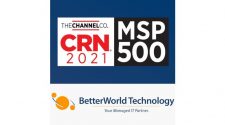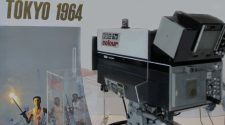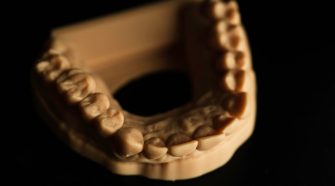JUST IN: ANTX Technology Exercises Attracting New Industry Participants
Expeditionary warfare unmanned surface vessel
Photo: Defense Dept.
The Navy and Marine Corps’ latest advanced naval technology exercises have drawn in additional industry players to assist in the services’ quest to acquire new capabilities faster, according to defense officials.
The events, known as ANTX, take place annually and bring together industry, academia as well as military officials in the requirements, acquisition and user communities. The most recent iteration, held at Camp Lejeune, North Carolina, July 9-19, featured 53 technologies with a particular focus on command and control, communications, force protection, unmanned systems and logistics. More than 1,900 technology assessments were completed, said Assistant Secretary of the Navy for Research, Development and Acquisition James “Hondo” Geurts.
“Anybody that brought equipment there got assessments from many of the folks who were there and they can use that [feedback] to modify their product or improve their product,” he told reporters Aug. 1 during a media roundtable at the Pentagon. “We got exposure to cutting-edge stuff that we may not have known we had a requirement for until we saw it.”
The event at Camp Lejeune followed on the heels of an ANTX that took place on the West Coast in April at Camp Pendleton, California.
Navy and Marine Corps officials are looking for technologies that will assist the services in conducting distributed, forward operations in denied environments, said Maj. Gen. Mark Wise, assistant deputy commandant for combat development and integration.
“When we start looking at what that future fight looks like and those things we need to enable it, this [ANTX] venue has really become a great way to start ferreting out some of those technologies that will enable our Marines and sailors,” he said.
Geurts noted that the capabilities brought to ANTX are evaluated by warfighters who would actually use the technology in the field to see how well they work.
The events are also a good opportunity for smaller companies to show off their products at little cost to them, officials noted.
“Some of these folks … they’ve got a shoestring budget [and are working] in their garage, but they have a really good idea that hasn’t been thought of yet,” Wise said.
To find companies to participate in ANTX, the Navy is issuing broad agency announcements.
“We kind of say, ‘Here’s the kind of theme we’re going to go after, or here’s the kind of things we’re interested in, and we’ve got multiple of these events coming.’ And then we just ask for some information,” Geurts said.
The BAA responses aren’t expected to be “a 500-page proposal with glossy things,” Geurts noted. The goal is to “reduce the barrier to bring ideas forward.”
The evaluation team looks at the responses and determines if the technology is applicable for a particular ANTX event before deciding which teams to invite, Geurts explained.
Wise said recent ANTX events have seen a fairly even mix between larger companies and smaller firms participating. A number of them could be qualified as startups, he noted.
As an example, there was a small company at the April exercise at Camp Pendleton, he said. “It was kind of a garage startup. They were working with some [unmanned underwater vehicle] capability but they really didn’t know what the application might be. They just saw the event and actually came in to talk to some of our folks. And some of our folks quickly said, ‘You know, there’s a hydrographic piece of this that’s actually something that we need to get you to develop.’ So [winning business at these exercises] does happen for really small companies.”
New players are also being brought into the fold. Only about 39 percent of the participants at the most recent ANTX had participated in a previous exercise, Geurts noted.
Autonomy and unmanned systems have been a key feature at this year’s events, the officials noted. They included: an expeditionary warfare unmanned surface vessel with a force protection payload; unmanned aerial systems for fast, on-demand delivery of supplies over long ranges; and an expeditionary, commercially available two-man portable UUV for littoral operations and autonomous reconnaissance.
Smaller UAS with vertical-landing capability performed well in windy conditions, Wise noted.
“I won’t go into a lot of specifics, but some of the seaborne platforms and the autonomous capability with weapon systems included, were fairly impressive at what they could do,” he said.
Geurts said: “Now you’re seeing combinations of autonomous systems. … What was remarkable to me was seeing autonomy in all those different operating environments starting to play together. And we can start to piece together operating concepts that may be closer to [being feasible for] us than we had originally conceived.”
Wise noted that capabilities that enable communications in contested environments and can be matured over time, are high on the sea services’ wish list.
“We saw a fair amount of that” from vendors at ANTX, he said.
Technologies that reduce the logistics burden are also in demand, he noted. One example from ANTX is the Mangrove, a vehicle that uses onboard water generating capabilities.
Geurts noted that the services aren’t looking for “pie in the sky” technologies that will take decades to develop and field. The aim is to get them through the acquisition pipeline faster, sometimes in as little as 12 to 18 months, by utilizing cooperative research-and-development agreements, consortium contracts, small business innovation research contracts and other transaction authority agreements.
“We’re using some of these new acquisition tools,” Geurts said. “Our real goal is if there’s things that have demonstrated value in the field with, you know, some minimal amounts of development, that we can be able to turn those around and put contracts in place and get them in limited prototype quantities to … the Navy or the Marine units.”
Topics: Test and Evaluation


![[The Future of Viewing] ④ Innovative Sound Technologies, Powered by AI – Samsung Global Newsroom](https://newsfortomorrow.com/wp-content/uploads/2020/04/Future-of-Viewing_pt-4_AI-Sound_thumb728-225x125.jpg)














